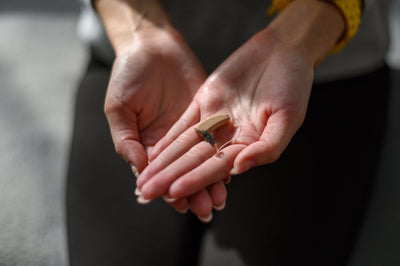Different Hearing Aid Types & Costs
Hearing aids are small electronic devices that are worn behind or in front of the ear. It amplifies certain sounds, allowing a person with hearing loss to listen, communicate, and fully participate in daily activities. Hearing aids can assist people in hearing better in both quiet and noisy situations. However, only about one out of every five people who could benefit from a hearing aid uses one.
The Hearing Tests
A hearing test is one of the first steps in evaluating hearing loss and determining if a hearing aid is needed. The test measures how well a person can hear while wearing a hearing aid by detecting what the softest sounds a person can hear in various situations.
The Kinds of Hearing Aids and How They Work
There are several types of hearing aids you can get prescribed with. The best type for you depends on the kind and severity of hearing loss you have.
1. Behind-The-Ear (BTE) Hearing Aids
One style of hearing aid fits entirely in the outer ear, behind the ear opening. It is worn by hooking the aid into the opening and seating it against the ear. The behind-the-ear style was the first type of hearing aid and remained a popular choice. It is often worn by children with small ear canals.
2. In-The-Ear (ITE) Hearing Aids
In-the-ear (ITE) hearing aids fit entirely in the outer ear, with only a tiny part of the aid visible outside the ear. ITEs can be used to treat mild to severe hearing loss. They are often preferred by people conscious about wearing hearing aids.
3. In-The-Canal (ITC) Hearing Aids
In-the-canal (ITC) hearing aids fit entirely in the ear canal. The ITC style is one of the most miniature styles and is often used by adults with small ear canals. They are also used to treat mild to severe hearing loss. They may be preferred by people who aren't willing to have something visible in their ears.
4. In-The-Bone (ITB) Hearing Aids
In-the-bone (ITB) hearing aids fit entirely in the ear canal but are attached to a custom-made plastic case that fits in the upper part of the outer ear. This type of hearing aid is made for people with large or protruding ear canals. They may be more comfortable for people with ear infections or a disorder called otitis.
5. Bone-Anchored Hearing Aids
Bone-anchored hearing aids (BAHA) are attached to the skull behind the ear and are completely hidden behind the ear. They are designed to treat people with conductive or mixed hearing loss.
The BAHA is placed inside the mastoid bone (a bone behind the ear). A magnet allows the hearing aid to be removed by the user and left off while showering.
6. Receiver-In-Canal (RIC) Hearing Aids
Receiver-in-canal (RIC) hearing aids fit entirely in the ear canal and are attached to a neckband worn outside the ear. Adults often use them with mild to severe hearing losses. A RIC hearing aid uses a remote microphone located in the device. The microphone sends the sound to a receiver. The receiver then sends the amplified sound to the hearing aid.
Conclusion
Hearing aids can be worn on the right or left ear. The type of hearing loss that a person has will determine the best hearing aid. Hearing aids will not restore normal hearing, but they can be used to help people hear better in situations that otherwise would be very difficult.
Are you looking for bloom hearing aids for you or your loved one? We at HearGlow want to make hearing aids more affordable for millions of people worldwide who are losing their hearing. Book a consultation and visit our branch in Oregon today!
Related Articles



